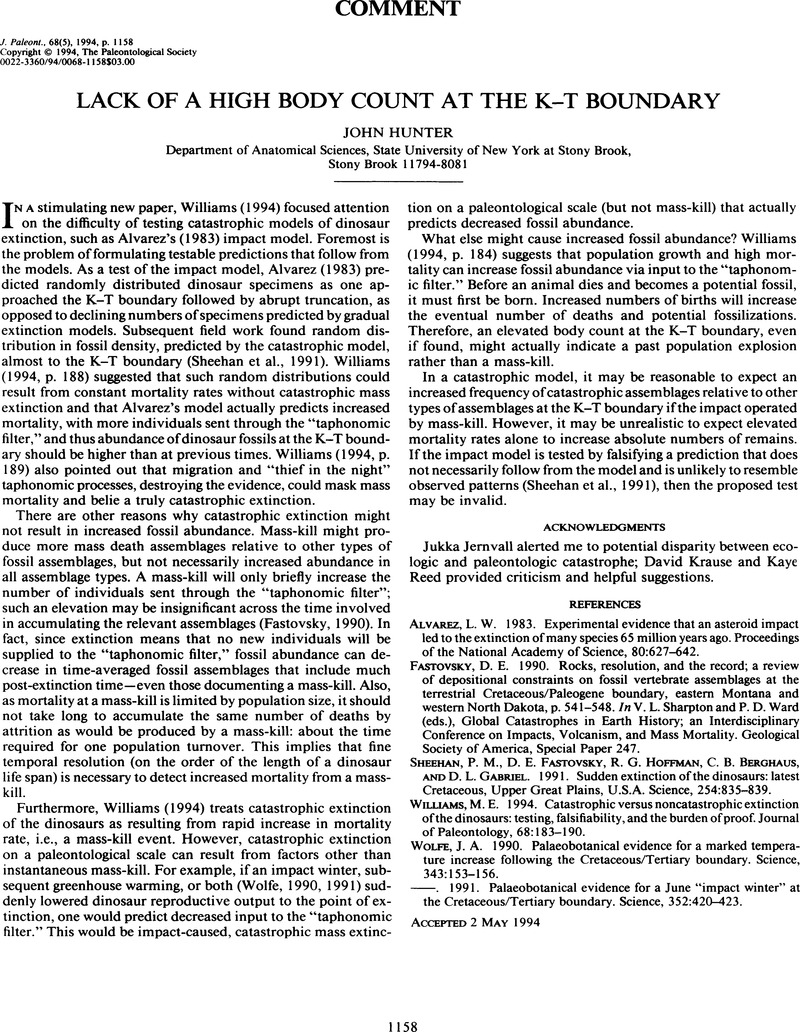Crossref Citations
This article has been cited by the following publications. This list is generated based on data provided by Crossref.
Jernvall, Jukka
and
Wright, Patricia C.
1998.
Diversity components of impending primate extinctions.
Proceedings of the National Academy of Sciences,
Vol. 95,
Issue. 19,
p.
11279.
Behrensmeyer, Anna K.
Kidwell, Susan M.
and
Gastaldo, Robert A.
2000.
Taphonomy and paleobiology.
Paleobiology,
Vol. 26,
Issue. S4,
p.
103.
Behrensmeyer, Anna K.
Kidwell, Susan M.
and
Gastaldo, Robert A.
2000.
Taphonomy and paleobiology.
Paleobiology,
Vol. 26,
Issue. sp4,
p.
103.
Wilson, Gregory P.
2005.
Mammalian Faunal Dynamics During the Last 1.8 Million Years of the Cretaceous in Garfield County, Montana.
Journal of Mammalian Evolution,
Vol. 12,
Issue. 1-2,
p.
53.



